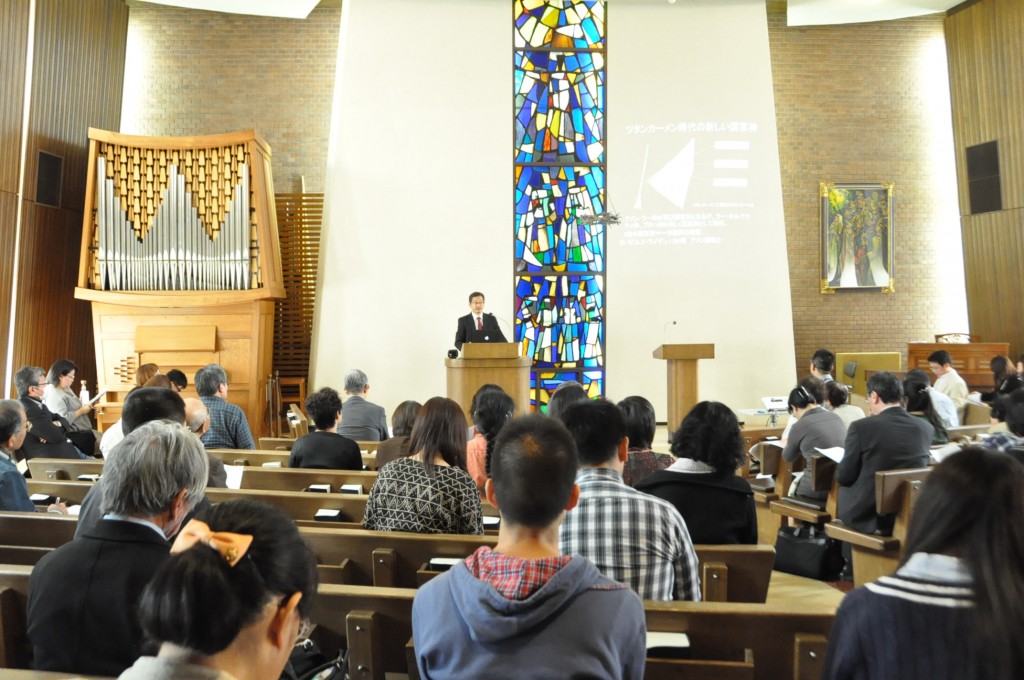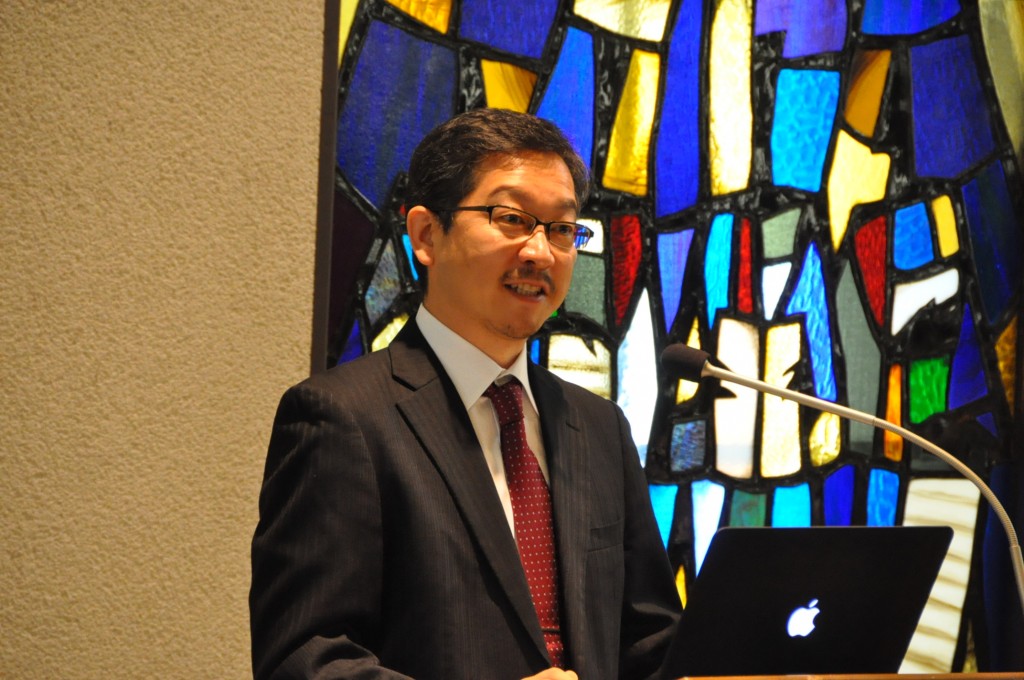Center for Interdisciplinary Study of Monotheistic Religions(CISMOR)Doshisha University
> Public Lectures > Tutankhamun and the Return to Orthodoxy: The Post-Amarna Period of Egypt’s Eighteenth DynastyPublic Lectures
Public Lecture with The Society of Near Eastern Studies in Japan
Tutankhamun and the Return to Orthodoxy: The Post-Amarna Period of Egypt’s Eighteenth Dynasty
| Date: |
2013/10/19 13:00− 15:00 |
|---|---|
| Place: | Divinity Hall Chapel, Imadegawa Campus, Doshisha University |
| Lecture: |
Nozomu Kawai Assistant Professor, Institute for Advanced Study, Waseda University |
| Summary: | |
|
On October 19, 2013, the Center for Interdisciplinary Study of Monotheistic Religions (CISMOR), Doshisha University, and the Society for Near Eastern Studies in Japan jointly held an open lecture on “Tutankhamun and the Return to Orthodoxy: The Post Amarna Period of Egypt’s Eighteenth Dynasty.” The lecturer, Dr. Nozomu Kawai, is a specialist in Egyptology and Egyptian archaeology, particularly the history and archaeology of the Egyptian New Kingdom. He has been engaged in excavation projects as a member of the Waseda University team and an American team. The lecture provided the audience with a golden opportunity to learn about the restoration of orthodox Egyptian religion during Egypt’s Eighteenth Dynasty. Dr. Kawai began his presentation by explaining the movement to restore polytheism during the reign of the Pharaoh Tutankhamun. During his short reign, major religious reforms took place in Egypt. His father, the Pharaoh Akhenaten, deeply instilled the new monotheistic religion, which he initiated by himself, into Tutankhamun during his childhood. After he became a pharaoh, however, Tutankhamun denied his father’s religion, and revived the cult of traditional polytheism. According to the inscription on the Tutankhamun’s Restoration Stela, as a result of the Amarna Revolution led by Akhenaten, in which the pharaoh stopped worshipping traditional deities of ancient Egypt, the deities in turn stopped protecting Egypt. The Stela further indicates that the loss of divine protection led to the devastation of the national land and failures in military expeditions. The Amarna Revolution is highlighted by a religious reform in which the Pharaoh Akhenaten introduced a new and virtually monotheistic religion, focusing on the cult of Aten. Since Akhenaten denied the cults of other traditional deities, according to Dr. Kawai, the cult of Aten has a characteristic of inclusive monotheism. The pharaoh promoted his belief that the Creator of the universe was the Egyptian solar deity Ra, and that Aten was the revelation of the god Ra, who revealed himself in the form of the sun shining in the sky. Accordingly, the cult of Aten can be interpreted as a form of the theology of the light (that is, the sun). In actuality, however, the new religion was used as a means of concentrating the power in the hands of the pharaoh. As a result, the cult of Aten did not spread among common Egyptian people. Moreover, religious services were performed only by the pharaoh, Akhenaten, in private. Several years after Akhenaten’s death, his son, who was called Tutankhaten at that time, was enthroned as the next pharaoh at the age of eight. In the early years of his reign, he relocated the capital from Aket-Aten (Amarna) to Memphis. With this relocation, Thebes revived as a religious center. This was a symbolic event representing the change from the cult of Aten to that of Amen-Ra. During the early reign of Tutankhaten, the co-existence of the two deities—Aten and Amen—was sought by revering the both as state deities. However, when the pharaoh changed his name to Tutankhamun, the god Aten lost his position as a state deity. To revive the traditional religion, Tutankhamun first restored temples enshrining traditional deities. He also resumed the production of statues of traditional deities and making offerings to them. Another important aspect of the revival of the orthodox religion was the selection of children from among influential families in Upper Egypt to make them priests. Even more important was the fact that three deities—Amen-Ra, Ra-Horakhty, and Ptah—became equally revered and worshiped as supreme state deities. This fact demonstrated that monotheism had been abandoned, and a polytheism of the three state deities established in its place. Tutankhamun’s initiatives to restore the traditional cult involved the redistribution of the national wealth to temples of traditional deities and aristocratic people. During the reign of his father, Akhenaten, power and wealth had been concentrated in the hands of the pharaoh. Through the restoration of the traditional cult by Tutankhamun, the wealth of Egypt was once again redistributed to the temples and aristocrats. Changes from the cult of Aten (monotheism) to the cult of the three state deities (polytheism) represent the co-existence of multiple deities and the pharaoh. The revival of the traditional cult helped stabilize the social order and empowered the ancient Egyptian empire as a thriving nation. At the same time, the changes inhibited the development of monotheism in ancient Egypt. (Lee Jianfeng, Research Assistant, Graduate Student of School of Theology, Doshisha University) |
|
|
*Admission Free, No Reservation Necessary. Hosted by: The Society of Near Eastern Studies in Japan CISMOR Co-hosted by: School of Theology, Doshisha University |
|
|
Program |
|

